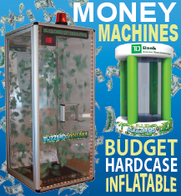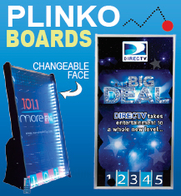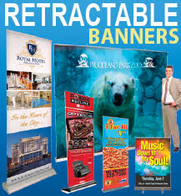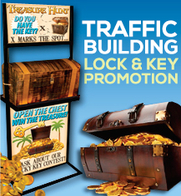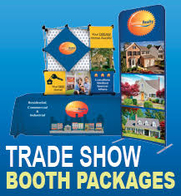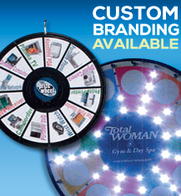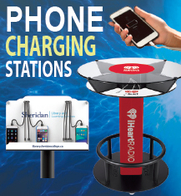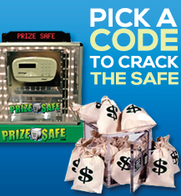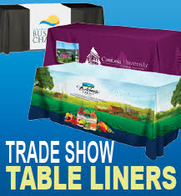 Much has been written about the importance of a good customer profile yet many exhibitors seem reluctant to take the time to create one. This article, which is the first of two parts, addresses the problem. Here we will look at the reasons a customer profile will enhance your exhibit program. In next month’s article I will show you the in’s and out’s of creating a meaningful profile.
Much has been written about the importance of a good customer profile yet many exhibitors seem reluctant to take the time to create one. This article, which is the first of two parts, addresses the problem. Here we will look at the reasons a customer profile will enhance your exhibit program. In next month’s article I will show you the in’s and out’s of creating a meaningful profile.
The five top reasons to create a Customer Profile:
1. It’s good marketing
The focus of a good marketing plan identifies the people who will ultimately use a product or service and who will be most receptive to your marketing message. This seems pretty basic, but all too often the hard work done by the marketing department gets lost in the shuffle when it’s time to take the product or service to market through an exhibition. This creates a number of problems for the exhibit manager:
a. The selection of shows
Many shows do not provide reliable third-party generated attendance information. The information an exhibit manager gets is often sketchy resulting in the selection process being relegated to guess-work. Many shows are chosen because of the size of the show, its reputation in the industry or competitor presence rather on the quality of the attendee. Exhibit managers are often left selecting a show on gross numbers rather than to ascertain if the right people are in attendance in the right numbers by comparing the attendee profile and the company customer profile.
In addition the longer the company stays with a particular show, the less likely they are to question its relevance to a specific market.
b. The process of goal setting
A well-positioned exhibiting goal, whether it is to generate leads or introduce a brand should include a definition for quality leads. Quality means understanding that not all attendees are equal and only those who fall within the parameters of a well-defined customer profile are of high value.
c. The exhibit manager’s role
Without a clear understanding of the customer profile, the exhibit manager’s role is only tactical (booking space, hiring the services, and arrange for shipping of the booth). The exhibit manager’s strategic role comes into play as part of the overall corporate plans with an understanding of the customer’s profile.
2. It helps focus your exhibit planning
Have you ever watched a commercial on television and wondered who would respond to that type of advertising. If it didn’t appeal to you then perhaps you do not fit into the profile that this advertiser was targeting. The same principle holds true in a trade show booth. Signs, messages, graphics and products all must be chosen to attract the attention of the person who fits your profile because each group has certain psychological triggers such as lifestyle, workplace interests, technology and so on. Finding the right triggers and being able to interpolate these into a three-dimensional display is a good rationale for creating a customer profile
3. It helps focus your exhibit staff
When you review the break-down of the show attendees in all likelihood you will conclude that your customer profile does not fit the entire audience. Yet, often booth staff succumb to the deadly temptation of trying to talk to everyone. The customer profile is not an attempt to exclude certain people from engagement, rather the profile acts as a compass to keep booth discussions pointed in the right direction with the right people.
4. It allows you to create customer engagement
Understanding your customer means learning their perspective on the solutions they are seeking. Your marketing department has already created a list of features and benefits for the product or service you are offering. Now you and your exhibit staff can create questions that will uncover which features and benefits will be of most interest to a particular booth visitor. By being able to engage the customer in the elements that are most important to them, the time you spend together becomes more meaningful and leaves the customer with a positive feeling about the visit. Understanding the customer’s perspective also opens the door to cross-promotion possibilities for other products or services your company offers.
5. Learn the most appropriate methods of follow-up
In most cases, actual business will not be written at the show which means that a proactive follow-up plan must be in place. Your follow-up must be timely and appropriate. Leaving follow-up in the hands of your customer is a recipe for disaster. Timely because the longer you leave a post show contact the greater the tendency for the customer’s initial excitement to dissipate. Appropriate because no two people have the same set of likes and dislikes about follow-up. Some will want you to communicate electronically through e-mail or text, others will want a formal proposal in writing yet others will want a personal visit. Understanding your customer will lead you naturally to the question about personal preferences in follow-up.
Now you understand how a profile will help your exhibit program. My next article will tell you how to create one.
About the Author
Jon Edelman provides exciting trade show marketing ideas, including advice about prize wheels, customizable scratch-off cards, money blowing machines, and other exciting trade show attractions. With years of experience in the trenches, he is an expert on booth displays, lead generation techniques, and networking with trade show vendors. Helping to build a referral-generating system, his ideas continuously lead to a boost in sales and revenue.










